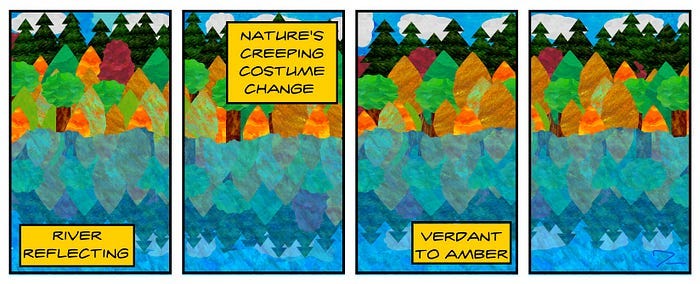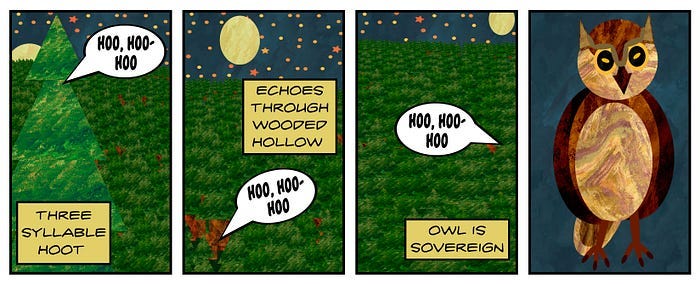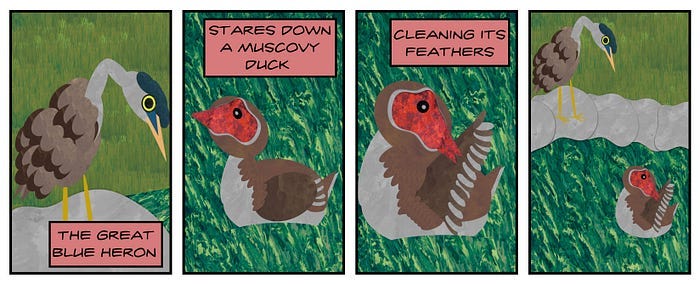How to Pay Attention
The core of mindfulness is not breath work — it’s noticing what you notice
Hello Friends!
I am not a meditator—at least not in the sense that the word is currently used in our culture. Instead, my mindfulness practice involves walking and writing.
All of us must be taking care of our spiritual, emotional, and mental health right now. The only way we can have the strength to fight the fights coming to us is if we are grounded in the moment, finding joy where we can, and refusing to spiral downward in fear and anxiety.
At its core, mindfulness is about paying attention. This essay explores my approach to paying attention. I hope it will prove useful to you.
How to Pay Attention
We often use meditation as a shorthand for mindfulness. However, meditation is only one tool for building mindfulness, and it’s not a tool that works for everyone.
The core of mindfulness is not breathwork — it’s noticing what you notice. It’s easy to sail through life in default mode. Our brains are programmed to filter out information unessential to survival. However, we often do a poor job of teaching our brains what types of information we want to pay attention to.
In The Summer Day, one of my favorite poems, the poet Mary Oliver asks:
Tell me, what is it you plan to do
with your one wild and precious life?
If you read the full poem, and you really should, you will discover that the poem's narrator, the one asking the question about your wild and precious life, is not inviting you to live a life of hustling and grinding.
Instead, she is teaching us about what the core of living a creative life, a human life, really is. In the middle of the poem, Oliver hides her most important advice. Oliver tells us:
I don’t know exactly what a prayer is.
I do know how to pay attention, how to fall down
into grass, how to kneel down in the grass,
how to be idle and blessed, how to stroll through the fields,
which is what I have been doing all day.Tell me, what else should I have done?
Doesn’t everything die at last, and too soon?
Paying attention is a skill that needs to be practiced. How do you learn to pay attention? How do you build mindfulness? What does it look like?
When you have a measure of mindfulness, you notice the food you are eating instead of mindlessly snacking throughout the day when you’re stressed. You notice the creeping anxiety that comes with certain work interactions instead of coming home tired and cranky and being unsure why you’re in such a bad mood.
Meditation is often seen as the gateway to mindfulness.
When you read about meditation, you are most likely only learning about one particular mode of meditation: transcendental meditation. This is a form of meditation that focuses on your breathing and having a single mantra. It’s a form of meditation that can cause actual physical pain and has never worked for me.
Two alternative tools I use to build mindfulness are walking and writing haiku.
For the past eight years, I have developed a creative and mindfulness practice around paying attention. I walk nearly every day, regardless of the weather, in nature or around my mid-sized town for as long as I can. After my walks, and sometimes even during my walks, I write one or more haiku poems about what I’ve seen.
Haiku is the poetry of observation. In traditional Japanese haiku, the poet writes about their observations of the natural world within the context of the changing seasons in seventeen syllables. English language haiku splits these seventeen syllables into three lines, the first and third lines having five syllables and the second line having seven syllables.
Writing haiku gives me a reason to notice what’s happening outside my loud, cluttered brain, as I walk outside. It switches my brain from default mode to observation mode.
The constraints of the haiku form also force me to think more deeply about what I have observed so that I can capture the essence of the experience.
Even writing a single haku a day will change the way you view your surroundings. It connects you with the natural world.
Another advantage of this practice is that it forces you to go outside. The act of moving and changing your physical environment increases your mindfulness.
Writing a haiku is a simple task. Anyone can put together three lines by counting syllables. There’s no need to rhyme or worry about meter. You can even skip the syllable counting if you like and just write a short poem that can be read in a single breath.
Haiku is also a discipline that makes it easy to see your improvement after just a few days of writing.
When you use haiku as a mindfulness practice, there is no need to share them with anyone else. But you should go back and reread your work. You will find patterns in both the changing of the seasons and in your moods and the topics you focus on.
You cannot walk and write haiku for long without seeing your powers of observation sharpen. You will begin to notice more as you do other activities.
If you take this practice seriously enough, you may even find yourself, like Mary Oliver, wondering at the magnificent dramas of creatures that you had once been completely ignorant of.
As I look back on my poems from the past several years, I’ve noticed that I write about the return of the great horned owl to the woods by our house every fall and the one year the owl did not return, the year of our massive wildfires, its absence was conspicuous. This year, I noticed a different owl calling from the woods; a screech owl was competing with the great horned owl for territory.
This winter, I’ve been taking my walks in a different part of town because of flooding in the parks I usually meander through. Looking over my haiku from the past few months, my obsession with ducks and waterfowl is apparent. I’m seeing more types of ducks than I ever knew existed in our town.
The poems and observations from these walks have prompted me to learn more about the ecology of my area and helped me feel more deeply connected to my community. While I may have once just seen ducks, I now see wood ducks, mallards, Muscovy ducks, bluebills, and many other species of ducks, some of which live here all year round and some of which only sojourn in our waterways during the winter.
This noticing keeps me attached to the present and doesn’t allow room for my mind to wallow in anxiety about the past and future.
Some people will find peace in focusing on their breath as they sit perfectly still. I find peace in the feeling of my feet pushing off against the ground and the sounds of birds as they paddle around a pond. While some may use the stillness of transcendental meditation to quiet their racing thoughts, I use the activity of walking and writing haiku to center my focus.
As someone who lives with ADHD and an anxiety disorder, mindfulness is not a luxury. I must maintain high levels of focus and awareness to thrive in my roles as a work-from-home father and freelance writer/illustrator.
My haiku walks have given me the space to practice paying attention and have helped me make mindfulness a way of life.
If you are looking for an alternative way to learn how to pay more attention, try writing haiku about what you experience as you move about in our wonderous world.
If you enjoyed this post and want to give me a one-time tip instead of committing to a paid subscription, you can do that here:
Thank you for reading! Reading, liking, and sharing this post are great, no-cost ways to support my work and the future of this publication.
Be the weird you want to see in the world!
Cheers,












You make some great points. You can meditate while doing the dishes as long as you pay attention a with single-mindedness that is gentle and nonjudgemental. Just see what's there and don't attach any preconceptions to it.
Reading this aligns so much with how I see poetry and paying attention. It's scary because I've been thinking about it a lot this week so reading this is like someone picked the notes from my brain and wrote this. Love the colourful comics. Haiku is relatively new to me. I have to remember to get the nature aspect in somehow. Love the weekly haiku challenge you run. This week, I've challenged myself with three different prompts from different creators just to get out of what I normally do with my poems and prompts. Thank you for sharing these insights!